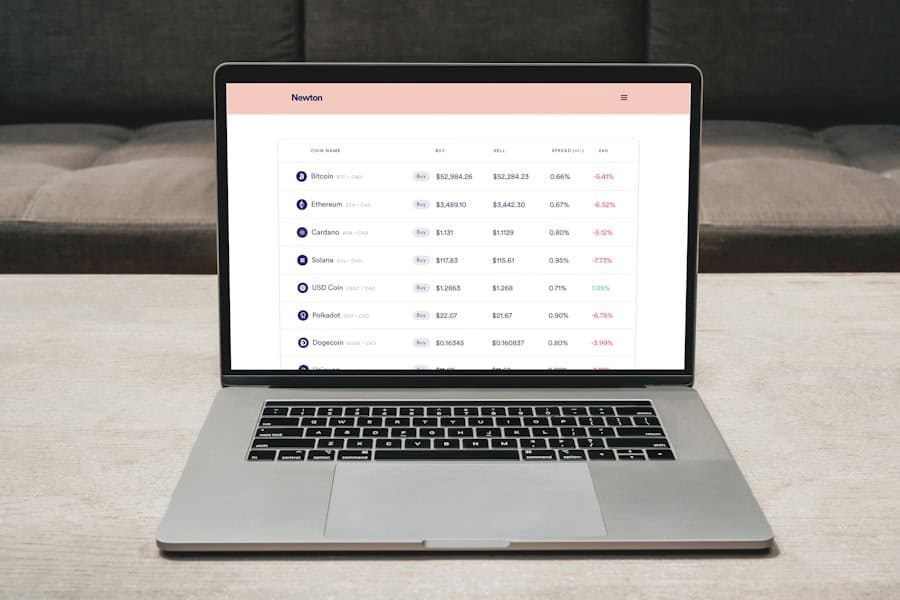Vulnerability assessment is a systematic process of identifying, quantifying, and prioritizing vulnerabilities within a system. This process can be applied to various assets, including computer networks, physical infrastructures, and other critical resources requiring protection. The primary objective of vulnerability assessment is to comprehensively understand system weaknesses and implement appropriate measures to mitigate or eliminate them.
The process involves several key steps:
1. Analyzing the system for potential vulnerabilities
2. Assessing the potential impact of identified vulnerabilities
3.
Developing a plan to address and remediate these vulnerabilities
Vulnerability assessment is a crucial component of any comprehensive security program. It enables organizations to proactively identify and address potential security risks before malicious actors can exploit them. Various methods can be employed in vulnerability assessment, ranging from simple manual inspections to sophisticated automated scans.
Regardless of the chosen approach, the ultimate goal remains consistent: to identify system weaknesses that could be exploited by attackers. Common vulnerabilities include:
1. Software vulnerabilities
2.
Configuration errors
3. Weak passwords
4. Outdated systems and applications
5.
Misconfigurations in network devices
By identifying these vulnerabilities, organizations can take targeted steps to address them and enhance their overall security posture. It is important to note that vulnerability assessment is not a one-time activity but an ongoing process. New vulnerabilities can emerge over time due to various factors, such as software updates, changes in system configurations, or the discovery of new attack vectors.
To maintain an effective security stance, organizations should conduct regular vulnerability assessments of their systems. This practice allows them to stay ahead of potential threats and continuously improve their security measures. Additionally, periodic assessments help organizations adapt to evolving threat landscapes and ensure that their security controls remain effective against new and emerging risks.
Key Takeaways
- Vulnerability Assessment is the process of identifying, quantifying, and prioritizing vulnerabilities in a system.
- It is important because it helps organizations understand their security posture and take proactive measures to mitigate potential risks.
- Types of Vulnerability Assessment include network-based, host-based, and application-based assessments.
- Steps to conducting a Vulnerability Assessment include defining the scope, identifying assets, scanning for vulnerabilities, analyzing the results, and remediating the vulnerabilities.
- Common vulnerabilities to look for in an assessment include weak passwords, unpatched software, misconfigured systems, and insecure network protocols.
Importance of Vulnerability Assessment
Vulnerability assessment is crucial for maintaining the security and integrity of any system. By identifying and addressing potential weaknesses, organizations can reduce the risk of security breaches and data loss. This is especially important in today’s digital age, where cyber attacks are becoming increasingly common and sophisticated.
Without a thorough vulnerability assessment, organizations are at risk of falling victim to these attacks, which can have serious consequences for their operations and reputation. Additionally, vulnerability assessment is often a requirement for compliance with industry regulations and standards. Many regulatory bodies require organizations to regularly assess their systems for potential vulnerabilities and take steps to address them.
Failure to do so can result in fines, legal action, and damage to the organization’s reputation. Furthermore, vulnerability assessment can help organizations prioritize their security efforts. By identifying the most critical vulnerabilities, organizations can focus their resources on addressing those weaknesses that pose the greatest risk.
This can help organizations make more informed decisions about where to allocate their time and budget for security measures. Additionally, vulnerability assessment can provide valuable insights into the overall security posture of an organization. By regularly assessing their systems for potential weaknesses, organizations can gain a better understanding of their security strengths and weaknesses, which can inform their overall security strategy.
Types of Vulnerability Assessment

There are several types of vulnerability assessment that organizations can use to identify potential weaknesses in their systems. These include: 1. Network Vulnerability Assessment: This type of assessment focuses on identifying vulnerabilities in a computer network, such as open ports, outdated software, and misconfigured devices.
Network vulnerability assessments can be conducted using automated scanning tools or manual inspections. 2. Application Vulnerability Assessment: This type of assessment focuses on identifying vulnerabilities in software applications, such as web applications or mobile apps.
This can include identifying common vulnerabilities such as SQL injection, cross-site scripting, and insecure authentication mechanisms. 3. Host Vulnerability Assessment: This type of assessment focuses on identifying vulnerabilities in individual computer systems, such as servers and workstations.
This can include identifying outdated software, weak passwords, and misconfigured settings. 4. Physical Vulnerability Assessment: This type of assessment focuses on identifying vulnerabilities in physical infrastructure, such as buildings, facilities, and other assets.
This can include identifying weaknesses in access controls, surveillance systems, and other security measures. Each type of vulnerability assessment has its own unique challenges and considerations. However, they all share the common goal of identifying potential weaknesses in a system and taking appropriate measures to address them.
Steps to Conducting a Vulnerability Assessment
| Steps | Description |
|---|---|
| 1 | Identify assets and resources to be assessed |
| 2 | Identify potential vulnerabilities and threats |
| 3 | Assess the likelihood and potential impact of each threat |
| 4 | Assess existing security measures |
| 5 | Identify and prioritize vulnerabilities for remediation |
| 6 | Develop and implement a plan to address vulnerabilities |
| 7 | Regularly review and update the vulnerability assessment process |
Conducting a vulnerability assessment involves several key steps to ensure a thorough and effective evaluation of potential weaknesses in a system. These steps include: 1. Planning: The first step in conducting a vulnerability assessment is to develop a plan that outlines the scope of the assessment, the resources needed, and the timeline for completion.
This plan should also include a list of the assets to be assessed and the methods that will be used to identify vulnerabilities. 2. Asset Identification: The next step is to identify the assets that will be included in the assessment.
This can include computer networks, software applications, physical infrastructure, and other assets that need to be protected. 3. Vulnerability Identification: Once the assets have been identified, the next step is to identify potential vulnerabilities in these assets.
This can be done using automated scanning tools, manual inspections, or a combination of both. 4. Risk Assessment: After identifying potential vulnerabilities, the next step is to assess the potential impact of these vulnerabilities on the organization.
This can include evaluating the likelihood of exploitation and the potential consequences of a successful attack. 5. Remediation Planning: Once the vulnerabilities have been identified and assessed, the next step is to develop a plan to address them.
This can include implementing security patches, updating software, changing configurations, or implementing other security measures. 6. Reporting: The final step in conducting a vulnerability assessment is to document the findings and recommendations in a formal report.
This report should include an overview of the vulnerabilities identified, their potential impact, and recommendations for addressing them. By following these steps, organizations can conduct a thorough vulnerability assessment that identifies potential weaknesses in their systems and provides a roadmap for addressing them.
Common Vulnerabilities to Look for in an Assessment
There are several common vulnerabilities that organizations should look for when conducting a vulnerability assessment. These include: 1. Outdated Software: One of the most common vulnerabilities is outdated software that has not been patched or updated to address known security flaws.
Attackers often target outdated software because they know that it is more likely to have known vulnerabilities that can be exploited. 2. Weak Passwords: Weak passwords are another common vulnerability that attackers often exploit to gain unauthorized access to systems.
Organizations should look for weak or default passwords that could be easily guessed or cracked by attackers. 3. Misconfigured Settings: Misconfigured settings in software applications or network devices can create security vulnerabilities that attackers can exploit.
Organizations should look for settings that are not aligned with best practices for security. 4. Lack of Encryption: Failure to encrypt sensitive data in transit or at rest can create vulnerabilities that attackers can exploit to gain unauthorized access to sensitive information.
5. Insecure Authentication Mechanisms: Insecure authentication mechanisms, such as weak authentication protocols or lack of multi-factor authentication, can create vulnerabilities that attackers can exploit to gain unauthorized access. By identifying these common vulnerabilities in a vulnerability assessment, organizations can take appropriate measures to address them and improve their overall security posture.
Tools and Techniques for Vulnerability Assessment

There are several tools and techniques that organizations can use to conduct a vulnerability assessment. These include: 1. Automated Scanning Tools: There are many automated scanning tools available that can scan computer networks, software applications, and other assets for potential vulnerabilities.
These tools can quickly identify known vulnerabilities and provide detailed reports on their findings. 2. Manual Inspections: In addition to automated scanning tools, organizations can also conduct manual inspections to identify potential vulnerabilities that may not be detected by automated tools.
This can include reviewing configurations, analyzing code, and conducting physical inspections. 3. Penetration Testing: Penetration testing involves simulating real-world cyber attacks to identify potential vulnerabilities in a system.
This can provide valuable insights into how attackers might exploit weaknesses in the system. 4. Code Review: For software applications, code review can be used to identify potential vulnerabilities in the codebase that could be exploited by attackers.
5. Security Audits: Security audits involve reviewing an organization’s overall security posture to identify potential weaknesses that could be exploited by attackers. By using these tools and techniques, organizations can conduct a thorough vulnerability assessment that identifies potential weaknesses in their systems and provides valuable insights into how to address them.
Best Practices for Vulnerability Assessment
There are several best practices that organizations should follow when conducting a vulnerability assessment: 1. Regular Assessments: Organizations should conduct regular vulnerability assessments to identify potential weaknesses in their systems and take appropriate measures to address them. 2. Collaboration: Vulnerability assessments should involve collaboration between different teams within an organization, including IT, security, and operations teams. 3. Compliance: Organizations should ensure that their vulnerability assessments are conducted in compliance with industry regulations and standards. 4. Documentation: Organizations should thoroughly document their vulnerability assessments, including their findings and recommendations for addressing potential weaknesses. 5. Continuous Improvement: Organizations should continuously improve their vulnerability assessment processes based on lessons learned from previous assessments and changes in the threat landscape. By following these best practices, organizations can conduct effective vulnerability assessments that help them identify potential weaknesses in their systems and take appropriate measures to address them.
If you are interested in learning more about the potential impact of the metaverse on the healthcare and wellness industries, check out this article. It explores how virtual reality and augmented reality technologies could revolutionize the way healthcare is delivered and wellness is promoted in the metaverse.
FAQs
What is a vulnerability assessment?
A vulnerability assessment is the process of identifying, quantifying, and prioritizing the vulnerabilities in a system. This can include computer systems, networks, and physical infrastructure.
Why is vulnerability assessment important?
Vulnerability assessment is important because it helps organizations understand their security weaknesses and take steps to address them before they can be exploited by attackers. It is a critical component of a comprehensive security program.
What are the different types of vulnerability assessments?
There are several types of vulnerability assessments, including network vulnerability assessments, web application vulnerability assessments, and physical security vulnerability assessments. Each type focuses on different aspects of security.
How is a vulnerability assessment conducted?
A vulnerability assessment is typically conducted using automated scanning tools that identify potential vulnerabilities in a system. These tools can also provide recommendations for remediation.
What is the difference between a vulnerability assessment and a penetration test?
A vulnerability assessment is focused on identifying and prioritizing vulnerabilities, while a penetration test is focused on actively exploiting those vulnerabilities to determine the impact on the system. Both are important components of a comprehensive security program.











Leave a Reply